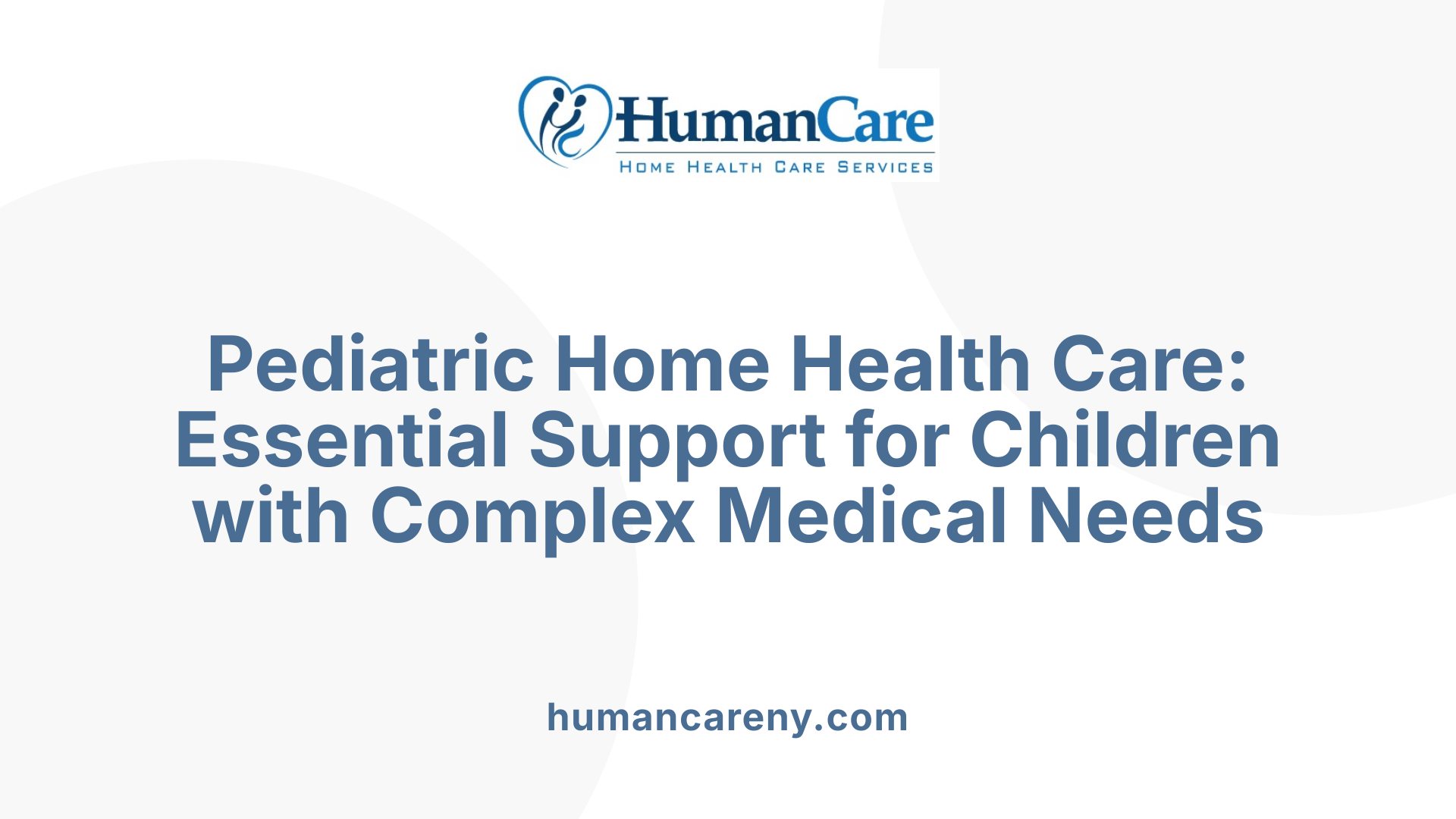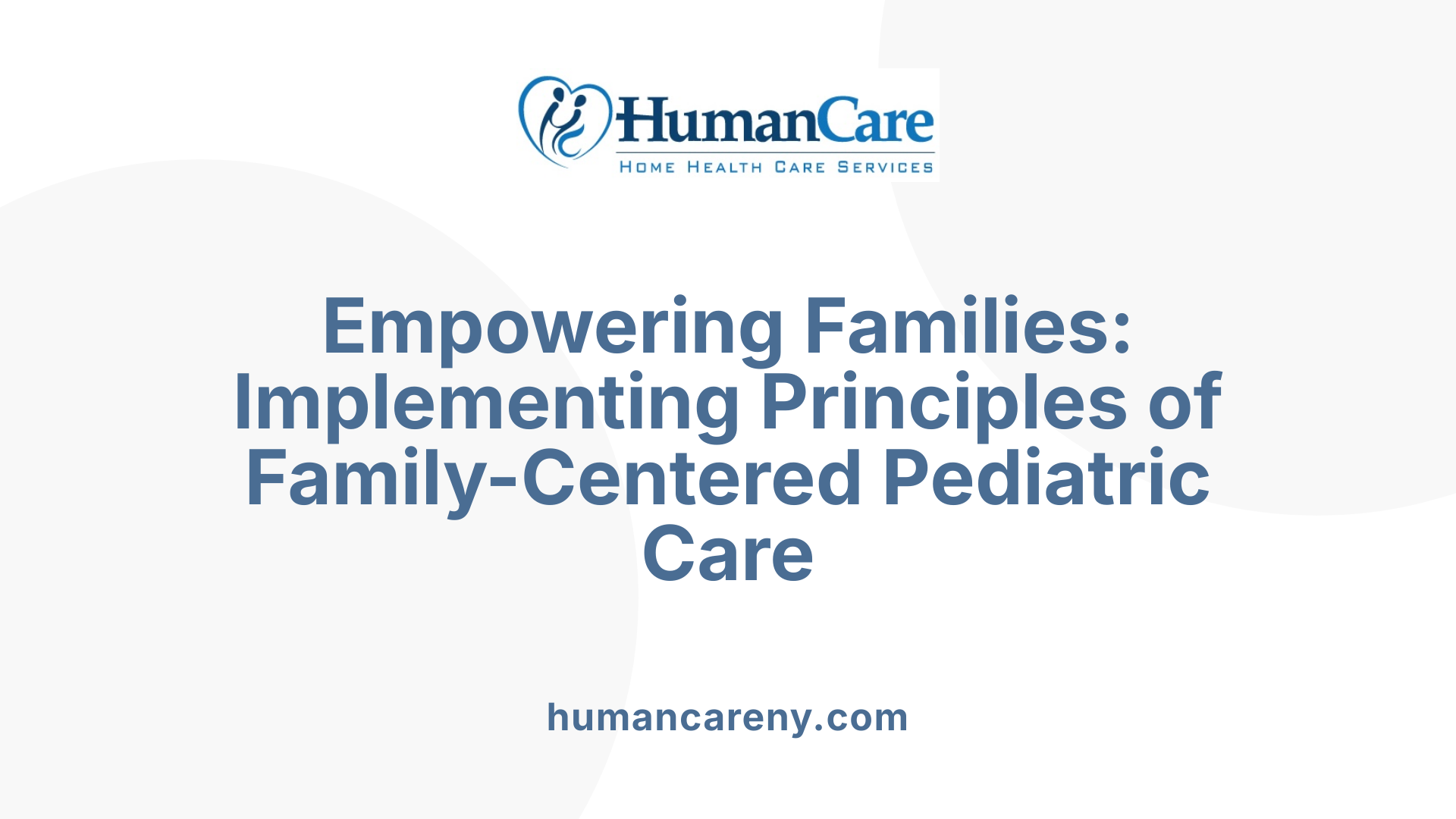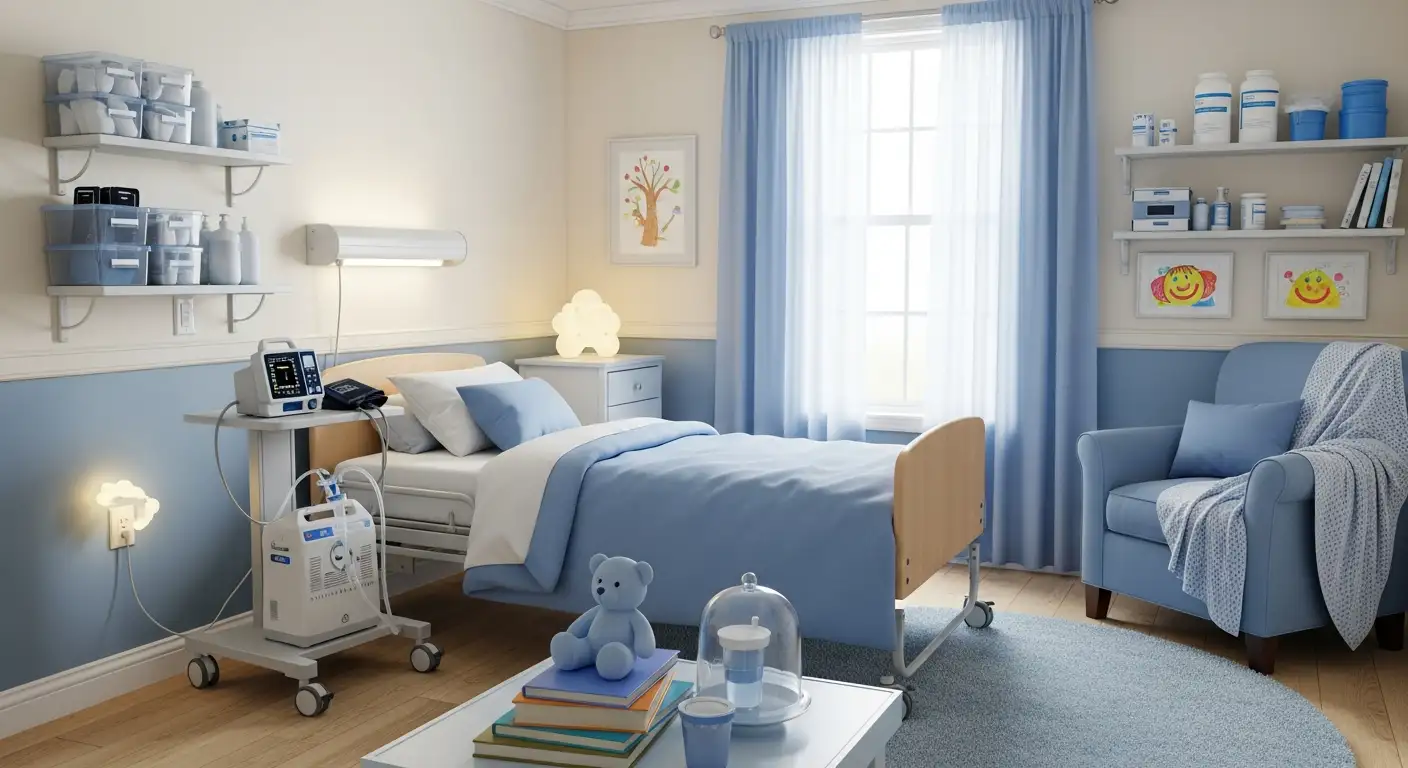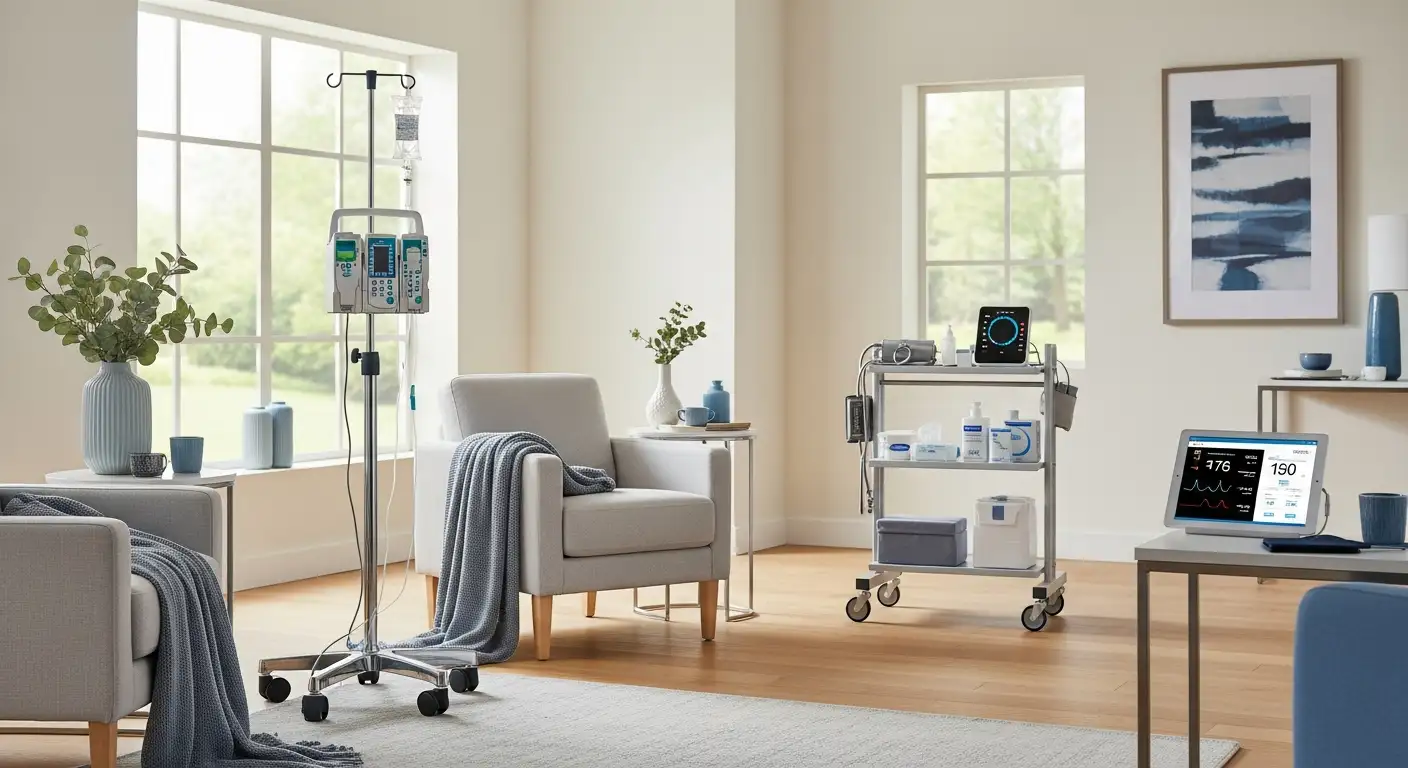Understanding the Landscape of Pediatric Home Health Care
Children with medical complexity (CMC) represent a growing population that requires specialized and continuous medical attention, often beyond what traditional clinical settings can provide. Pediatric home health care (PHHC) emerges as a vital system that brings intensive care directly into the homes of these children. This article explores how family-centered care (FCC) complements PHHC, creating a comprehensive approach that supports not only the child but their family as essential partners in care. By examining care coordination, legal frameworks, health outcomes, and innovative programs, we delve into the multifaceted dimensions that shape effective pediatric home care today.
The Critical Role of Pediatric Home Health Care for Children with Medical Complexity

What is Pediatric Home Health Care (PHHC)?
Pediatric home health care (PHHC) refers to the specialized health services provided to children with disabilities and complex medical conditions within their homes. This care encompasses a wide range of supports including skilled health providers, durable medical equipment, and medical supplies essential for maintaining the child's physiologic health and daily functioning.
Who are Children with Medical Complexity (CMC)?
Children with medical complexity (CMC) are a subgroup of children with intensive health care needs requiring ongoing medical support. These children often depend heavily on pediatric home health care to manage their daily care, prevent complications, and support development. The number of CMC in the U.S. is growing, with around one in 20 children discharged from hospitals needing specialized equipment or home health services.
What Services are Included in PHHC?
PHHC includes various components vital to the well-being of CMC:
- Skilled health providers who deliver assessments, treatments, and training
- Durable medical equipment such as ventilators, feeding tubes, and mobility aids
- Medical supplies necessary for ongoing care, like wound dressings and catheters
- Family caregiver support which recognizes the essential role of parents and caregivers in delivering day-to-day care
Together, these services help reduce hospital visits, improve safety, and enhance the child's quality of life.
How is PHHC Established and Maintained?
The process of prescribing and sustaining pediatric home health care involves five clear steps:
- Identifying needs: Assessing the child’s health requirements and family circumstances
- Investigating options: Exploring available home health resources and services
- Developing care plans: Creating a coordinated plan that integrates medical and support needs
- Initiating services: Starting home health interventions and delivering equipment
- Managing evolving needs: Continuously monitoring and adjusting care as the child’s condition changes
This structured approach ensures that the complex needs of CMC are met efficiently and responsively, minimizing family burden and optimizing health outcomes.
Family-Centered Care: Principles and Implementation in Pediatric Medical Homes

What is Family-Centered Care (FCC)?
Family-centered care (FCC) focuses on making families active partners in managing a child's healthcare. It means care is delivered with respect for the family's role, preferences, and cultural background, ensuring they are supported and included at every step.
How Does the Medical Home Model Support FCC?
The medical home model provides a stable, continuous source of care that coordinates all aspects of a child's health needs. For children with medical complexity, this approach ensures accessibility and comprehensive management within one trusted partnership involving families, pediatricians, and other providers.
What Are the Seven Attributes of FCC According to the American Academy of Pediatrics?
FCC, as defined by the American Academy of Pediatrics, should be:
- Accessible: care is easy to obtain when needed
- Continuous: ongoing over time
- Comprehensive: addressing all health needs
- Coordinated: integrating services across settings
- Compassionate: delivered with empathy
- Culturally effective: respectful and responsive to cultural differences
- Family-centered: values family input and involvement
What Strategies Help Engage Parents and Caregivers as Partners?
Effective FCC relies on education and training for healthcare providers to improve communication and partnership skills. Sharing clear information and involving parents in decision-making empowers families to participate actively in care planning and delivery.
How Is Culturally Effective Care Delivered and What Role Do Community Health Workers Play?
Culturally effective care acknowledges and respects each family's unique background. Incorporating culturally competent community health workers bridges gaps between healthcare teams and diverse families, enhancing trust and ensuring care meets cultural and linguistic needs.
Enhancing Care Coordination and Interagency Collaboration to Support Families

Why is care coordination critical for success in pediatric home health care (PHHC)?
Care coordination is fundamental to the success of PHHC for children with medical complexity (CMC). This process ensures that the multifaceted needs of CMC are anticipated and addressed early, preventing care gaps and minimizing complications. Skilled coordination facilitates clear communication between families and care providers, enabling tailored services that evolve with the child's health status. It also supports the management of medical equipment, medications, and daily therapies essential for the child's well-being.
How do interagency relationships impact care for children with medical complexity?
Strong, collaborative relationships between healthcare providers, community agencies, schools, and social services create a supportive network around the child and family. These interagency connections help pool resources, align goals, and decrease service fragmentation. When agencies work together effectively, families experience smoother transitions between care settings, improved access to comprehensive services, and reduced stress.
What promising programs enhance family-centered care and coordination?
Field-based initiatives such as the Family Connects model and family-driven systems change have demonstrated positive impacts on care coordination and family engagement. Family Connects involves universal home visiting to assess family needs and connect them instantly with community resources. Family-driven systems change empowers families to participate actively in designing and improving services, ensuring care aligns with their values and cultural context. Such programs emphasize partnership, proactive support, and consistent follow-up.
How do family-centered care assessment tools support quality improvement?
Tools like the Family-Centered Care Assessment Tool and the Patient- and FCC Organizational Self-Assessment Tool enable organizations to systematically evaluate the accessibility, responsiveness, and cultural effectiveness of their services. These assessments highlight areas for enhancement in communication, coordination, and involvement of families as true partners. By utilizing these tools, providers can implement data-informed strategies to strengthen care delivery and responsiveness.
In what ways can longitudinal care coordination reduce family burden?
Sustained coordination over time helps families navigate the complexities of care, reducing the emotional and logistical challenges of managing multiple providers and services. It promotes continuity that fosters trusting relationships, anticipates evolving needs, and supports the integration of new therapies or equipment. Longitudinal approaches diminish crises that can lead to hospitalization and lessen the unpaid workload often assumed by family caregivers.
| Aspect | Description | Example or Tool |
|---|---|---|
| Care Coordination | Anticipating and managing evolving needs; ensuring communication | Skilled home health providers, longitudinal follow-up |
| Interagency Relationships | Collaboration across healthcare, community, and social sectors | Family-driven systems change program |
| Field-Based Programs | Initiative to improve family engagement and care integration | Family Connects universal home visiting |
| Family-Centered Assessment | Tools to evaluate and improve family involvement and cultural competence | Family-Centered Care Assessment Tool |
| Reducing Family Burden | Continuous support and coordination to ease workload and stress | Long-term care coordination, partnership with caregivers |
Addressing Barriers to Access and Quality in Pediatric Home Health Care
What Are the Gaps in Access to High-Quality Integrated Pediatric Home Health Care?
Despite its critical role, many children with medical complexity (CMC) face significant barriers in accessing comprehensive pediatric home health care (PHHC). These gaps arise from fragmented service delivery models and inconsistent coverage, leading to disruptions in care continuity.
How Do Policy, Coverage, and Workforce Challenges Affect PHHC?
Policy limitations and insurance coverage inconsistencies often restrict availability of necessary home services and equipment. Additionally, workforce shortages among skilled home health providers hamper timely care, further limiting effective service delivery.
What Are the Consequences of Inadequate PHHC for Children and Families?
Without sufficient PHHC, children are at greater risk for hospitalizations, emergency visits, medication errors, device complications, and poorer developmental outcomes. Families endure heightened stress, physical injury, and negative health effects as unpaid caregivers face overwhelming demands.
What Legal Frameworks Support Home and Community-Based Care?
Legislation such as the Americans with Disabilities Act (ADA) and landmark rulings like the Olmstead decision affirm the right of children with disabilities to receive care in home and community settings. These frameworks guide policies to shift care away from institutional setups toward family-based environments.
How Does Limited PHHC Impact Family Caregivers’ Well-Being and Finances?
Insufficient home health support places heavy physical and emotional burdens on family caregivers. Financial repercussions include disrupted employment and increased out-of-pocket costs, inflaming socioeconomic disparities and diminishing family stability.
This combination of policy, workforce, and systemic issues highlights the pressing need for integrated strategies to improve PHHC access and quality, ultimately enhancing health outcomes for children and strengthening family support systems.
The Role of Pediatricians and Healthcare Providers in Sustaining Quality Care
Pediatricians' Central Role in PHHC Planning and Maintenance
Pediatricians are at the heart of effective pediatric home health care (PHHC) for children with medical complexity (CMC). They lead the process of identifying the child's needs, investigating service options, developing personalized care plans, initiating PHHC services, and managing evolving care requirements. This comprehensive involvement ensures that PHHC is well-coordinated and tailored to the child's unique health demands.
Need for Healthcare Provider Training and Education in Family-Centered Care (FCC)
To deliver family-centered care effectively, healthcare providers require specialized training. Education equips providers with the skills to offer care that is accessible, continuous, coordinated, compassionate, culturally sensitive, and truly family-centered. This foundation supports the best possible health outcomes by fostering provider competence in engaging families as integral partners.
Communication and Engagement with Families as Partners
Strong communication and collaboration between providers and family caregivers are pivotal for PHHC success. Recognizing parents and caregivers as active partners encourages shared decision-making and supports the child's holistic well-being. Such engagement improves care coordination and helps anticipate changing needs early, mitigating potential complications.
Importance of Skilled Home Health Providers in PHHC Success
The effectiveness of PHHC also depends on the presence of skilled home health providers who can deliver complex medical services within the home environment. These professionals work alongside families, offering essential support that safeguards the child's physiological health and functional participation in daily life.
By integrating these elements—pediatrician leadership, provider education, family partnership, and skilled home health staff—the healthcare system can sustain high-quality care that meets the demanding needs of children with medical complexity.
Future Directions: Research, Equity, and Innovation in Pediatric Home Care

Why is a family-partnered multi-stakeholder research agenda essential?
Advancing pediatric home health care (PHHC) requires a collaborative research agenda that actively involves families, clinicians, policymakers, and community organizations. Such partnership ensures that research priorities align with the real-world experiences and needs of children with medical complexity (CMC) and their caregivers, enhancing the relevance and uptake of findings.
What child and family outcomes and disparities should research focus on?
Research must comprehensively address health outcomes such as hospitalizations, developmental trajectories, and caregiver well-being. Importantly, it should spotlight disparities driven by socioeconomic factors, geographic location, and systemic barriers, aiming to reduce inequities in access to high-quality PHHC.
How can data infrastructure and safety event monitoring be developed?
Building robust data systems and registries for PHHC will enable continuous monitoring of health and safety outcomes. These platforms can capture safety events like medication errors and device complications, supporting proactive risk identification and quality improvement initiatives.
What role do equity-focused interventions and workforce training play?
Innovations must include strategies to train a diverse, culturally competent home health workforce capable of delivering family-centered care equitably. Interventions that target underserved populations can reduce disparities and support families facing social and financial challenges related to PHHC.
How can innovative models and continuous quality improvement enhance PHHC?
Promising models such as family-driven systems change and coordinated care programs like Family Connects exemplify innovative approaches. Coupled with ongoing evaluation and refinement, these models aim to optimize care coordination, strengthen parent-provider relationships, and improve long-term outcomes for CMC.
The future of PHHC lies in integrating these research directions to create a sustainable, equitable, and effective care system that supports both children and families comprehensively.
Towards a Comprehensive and Compassionate Pediatric Home Care Future
Pediatric home health care combined with family-centered care approaches represents a transformative pathway to supporting children with medical complexity and their families. As this growing population increasingly relies on in-home services for their well-being and functionality, embracing coordinated, accessible, and culturally sensitive care is imperative. Addressing systemic barriers, enhancing provider capabilities, and promoting innovative research will be key to advancing quality and equity in pediatric home care. Together, these efforts aspire to fulfill the promise of comprehensive care that honors families as true partners, ultimately improving health outcomes and quality of life for children who need it most.



